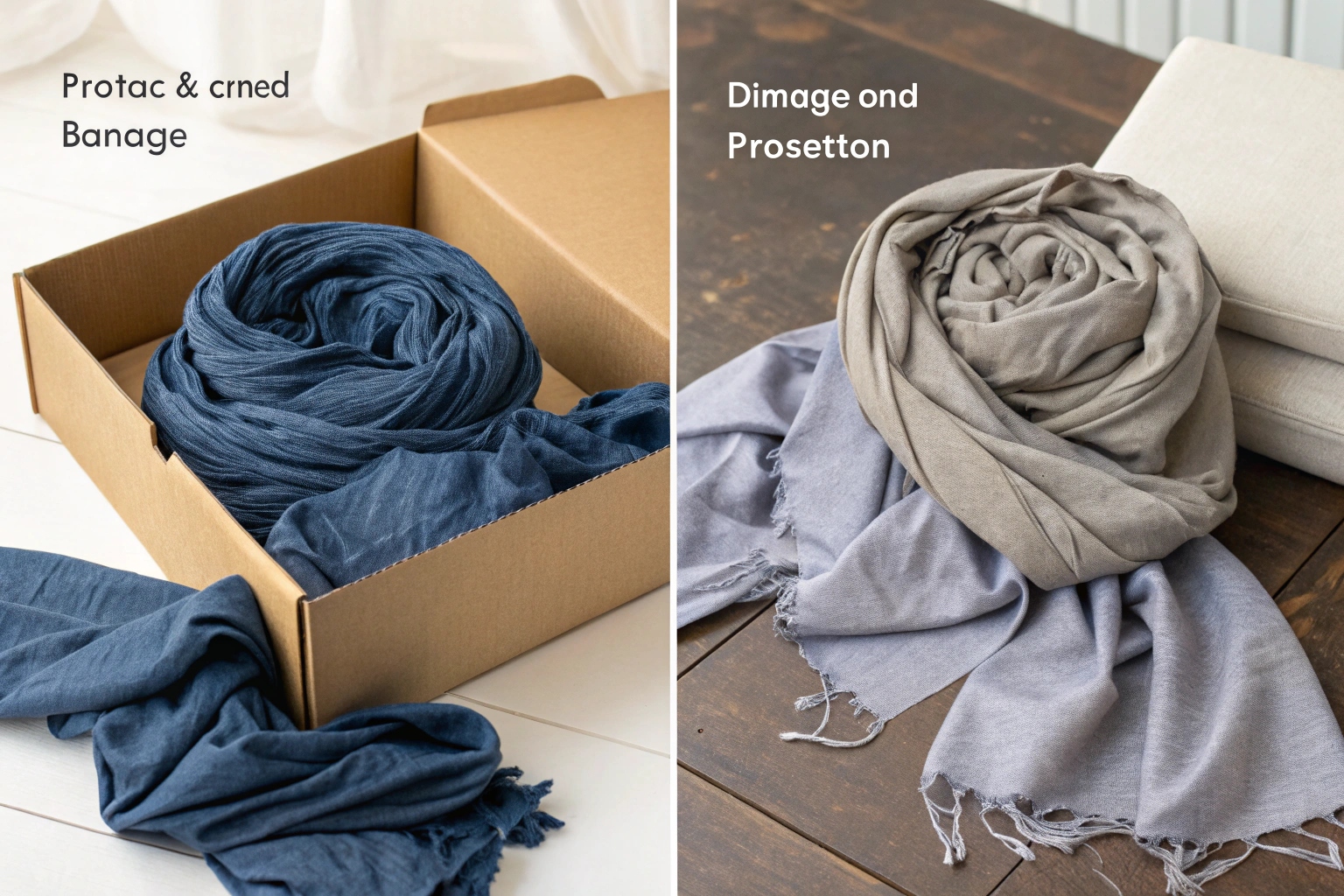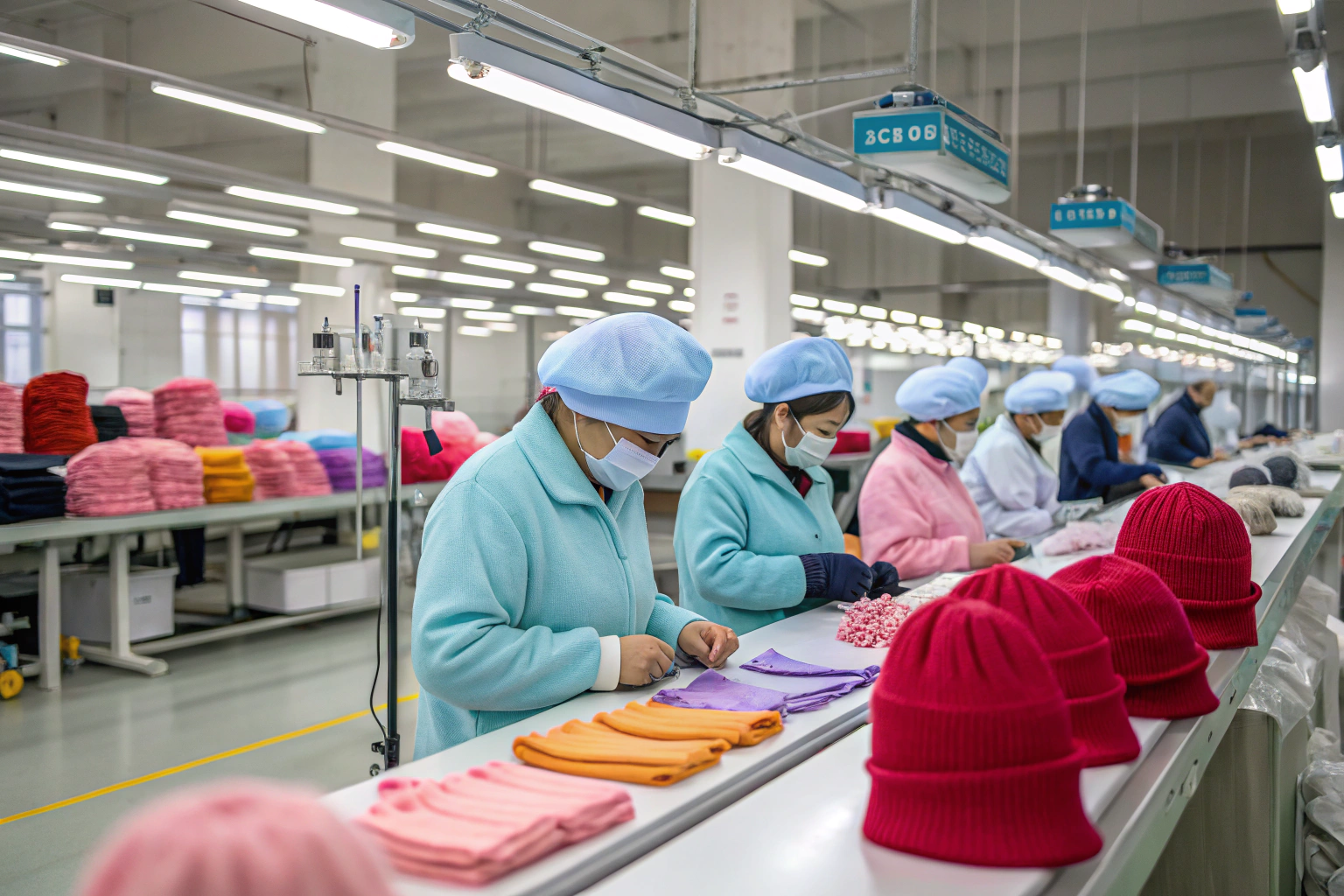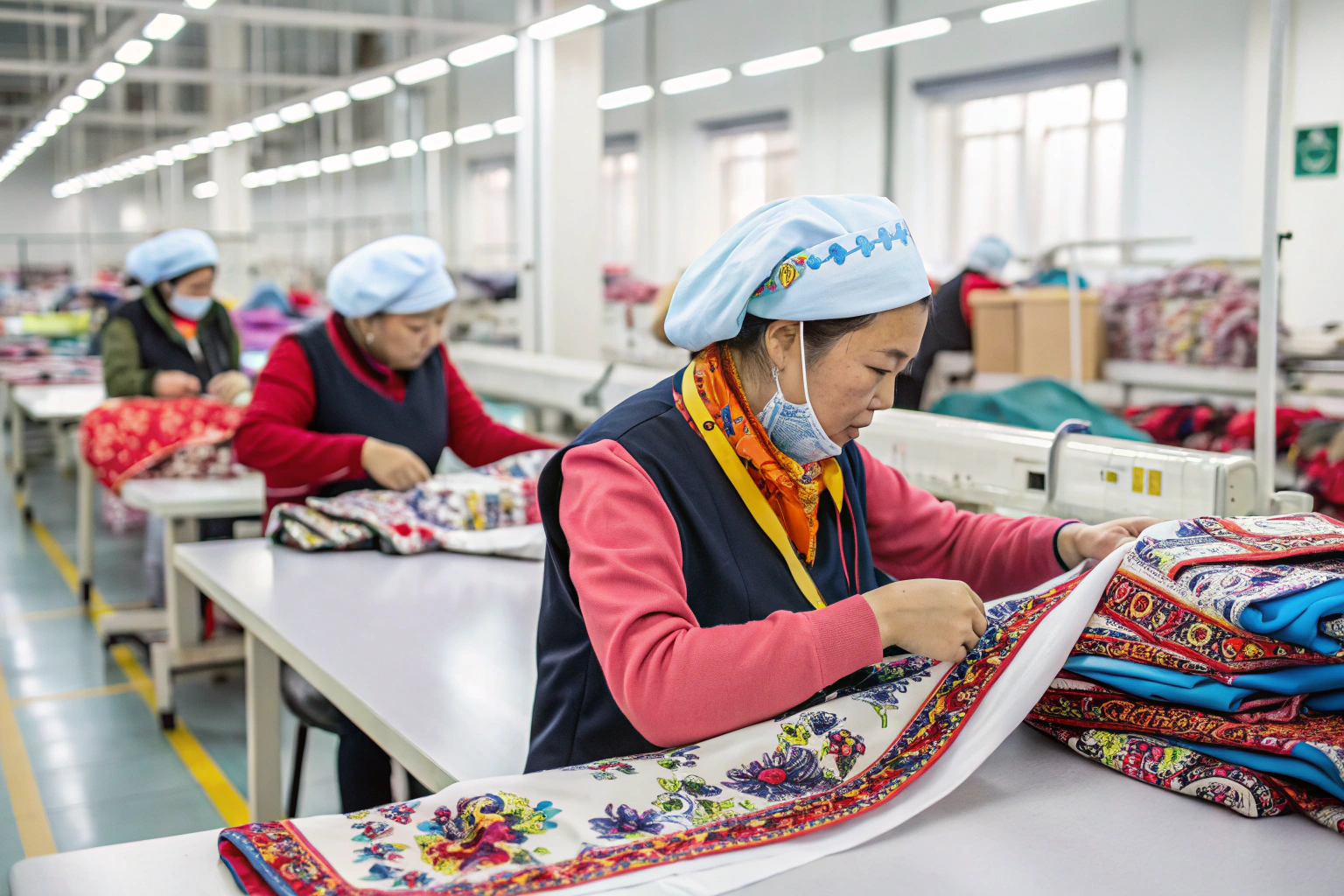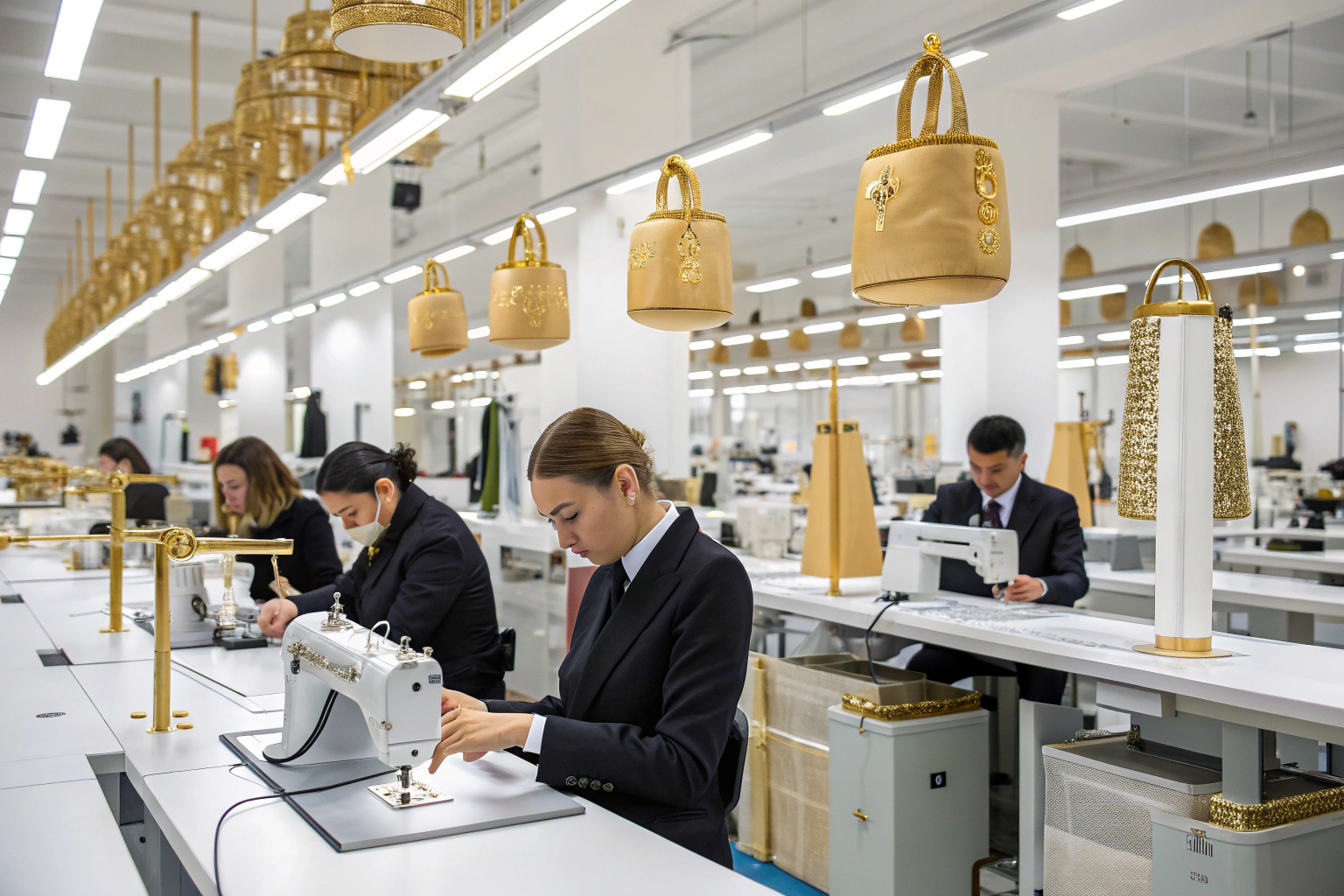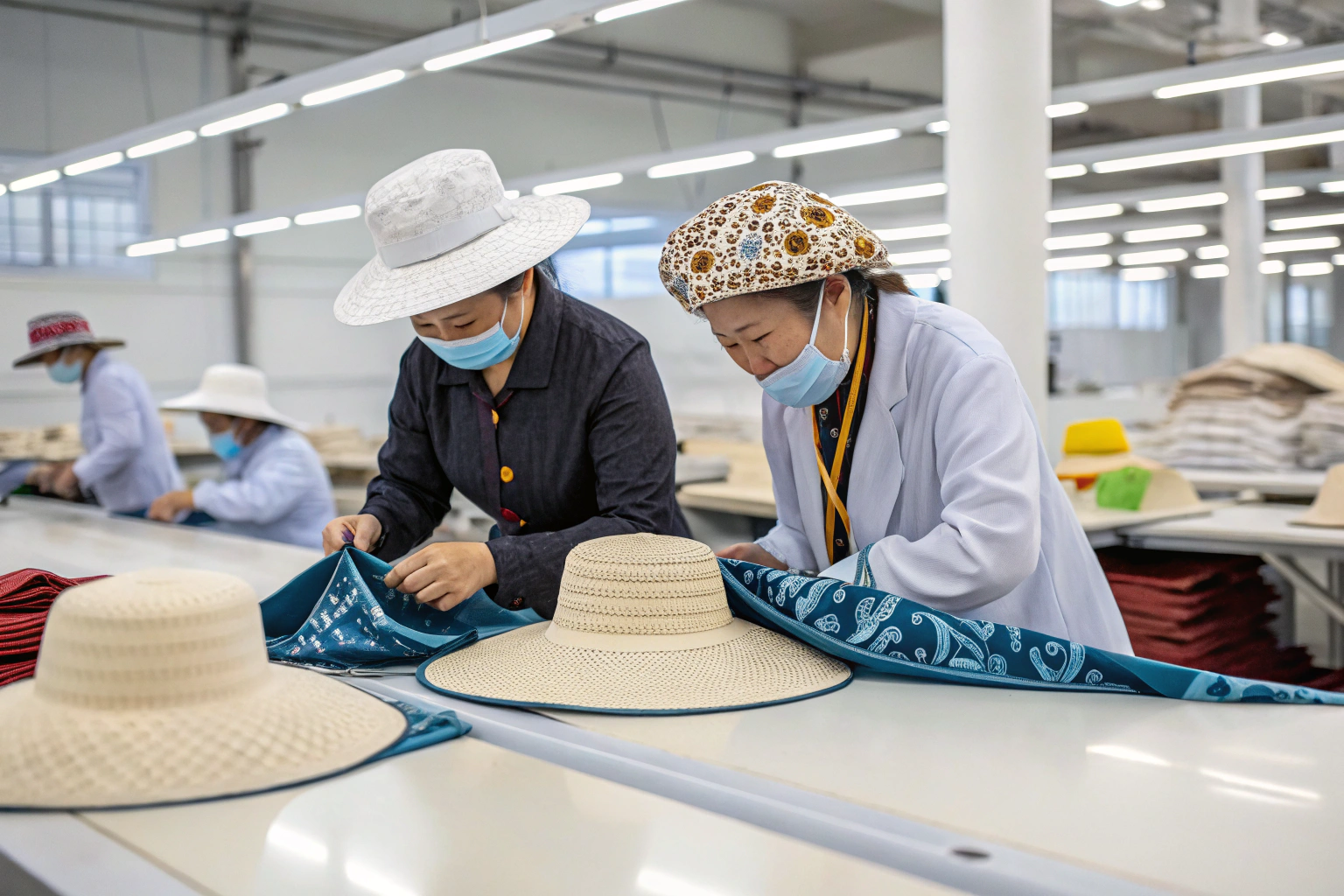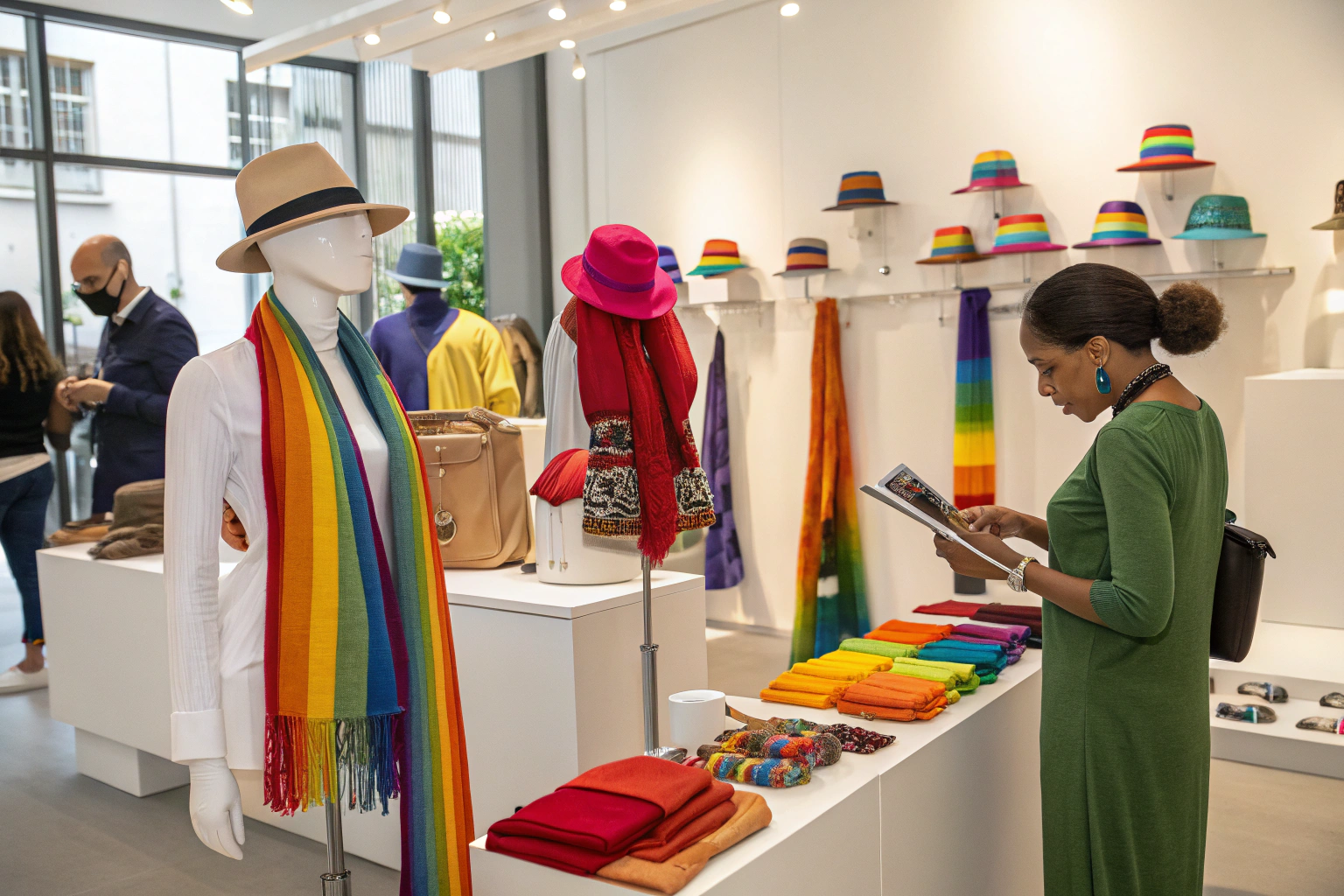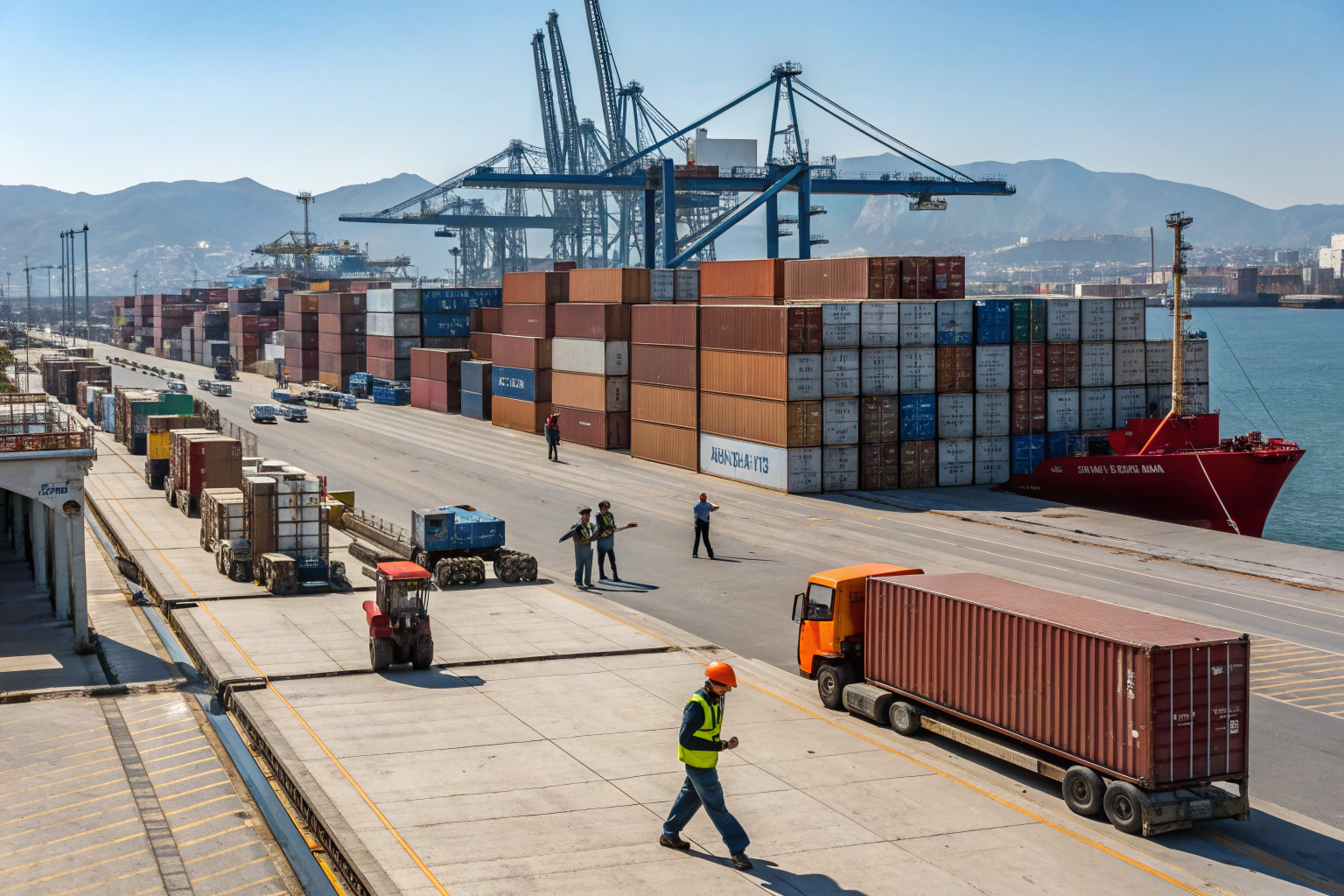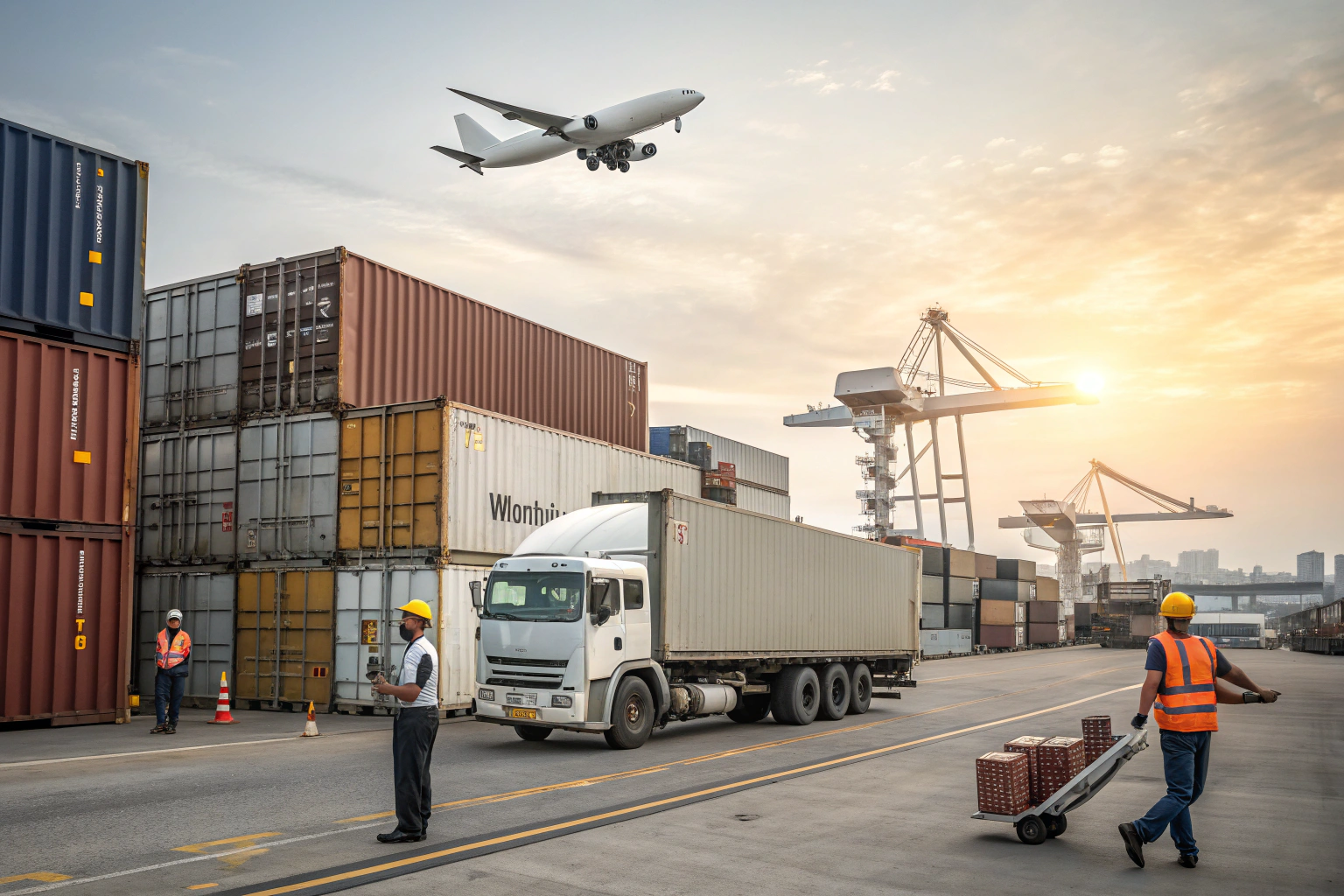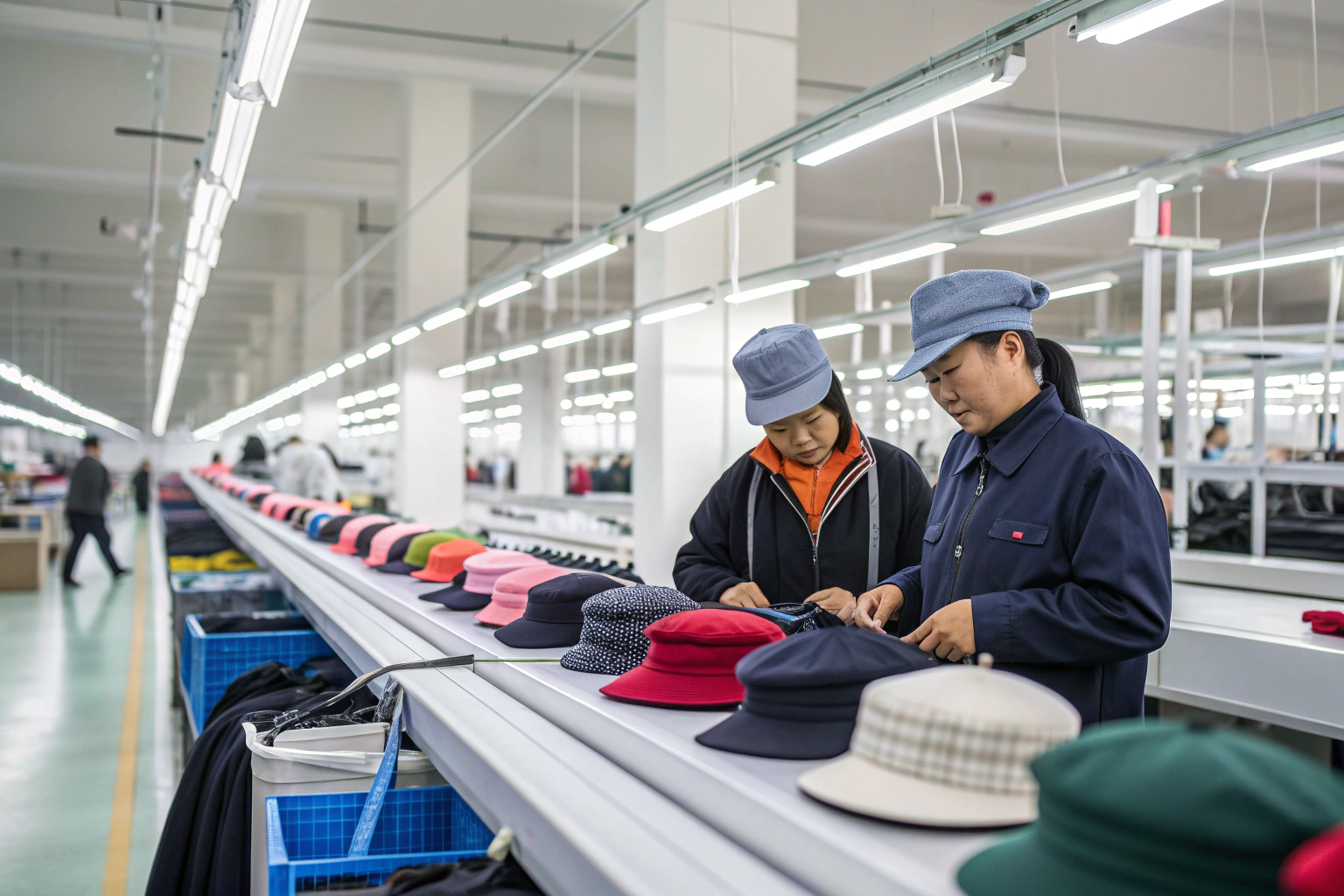You’ve packed your scarves, shipped them internationally, and when they arrive—wrinkles, creases, or worse—crushed corners kill the first impression. That’s not a risk we can afford in high-stakes retail.
Scarves made of wrinkle-resistant, lightweight, and crush-proof fabrics like polyester blends or modal offer the best protection against shipping damage. At AceAccessory, we test every scarf fabric to ensure it holds up in long-distance freight.
The choice of fabric doesn’t just affect the look and feel—it directly impacts how your scarves survive packaging, shipping, and unboxing. Let’s explore how to select scarf materials that minimize shipping-related problems.
Which Fabrics Resist Wrinkles and Crushing During Transit?
You want your scarves to arrive looking fresh off the shelf—not like they’ve been shoved in a suitcase. The key is selecting materials that naturally spring back into shape.
Polyester chiffon, modal, and cashmere blends are among the most wrinkle-resistant scarf fabrics. They hold up well to folding, stacking, and shipping pressure over long distances.
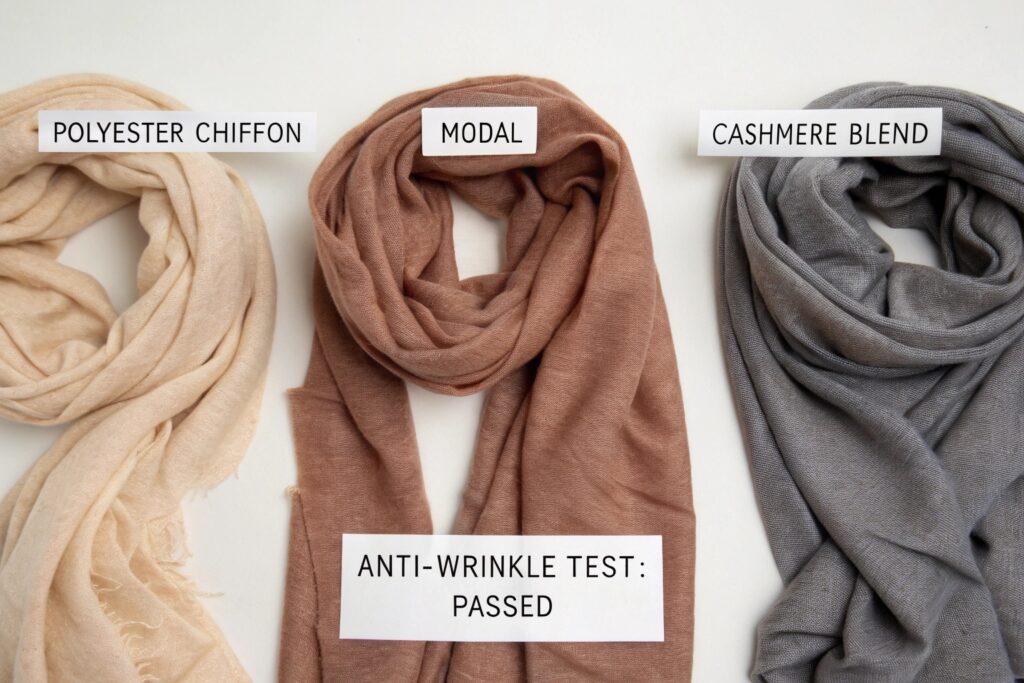
What types of fabrics bounce back best after compression?
Polyester Blends
- Pros: Excellent wrinkle resistance, cost-effective, fast drying
- Use Cases: Mass-market fashion scarves, promotional items
- Common Types: Polyester chiffon, poly-viscose blends
Modal
- Pros: Soft, breathable, drapes well, resists creasing
- Use Cases: Mid- to high-end casual scarves
- Common Types: Modal-spandex blends for added resilience
Cashmere Blends
- Pros: Luxurious feel, better wrinkle recovery than pure wool
- Use Cases: Premium scarves for winter collections
- Common Types: 70% wool, 30% cashmere blends
| Fabric Type | Wrinkle Resistance | Shipping Durability | Best Use Case |
|---|---|---|---|
| Polyester Chiffon | ★★★★★ | ★★★★☆ | Lightweight trend scarves |
| Modal | ★★★★☆ | ★★★★★ | Soft everyday scarves |
| Cashmere Blend | ★★★★☆ | ★★★★☆ | Winter retail or luxury gifts |
At AceAccessory, we simulate stacking and rolling pressure for every fabric we use. That’s how we know which fabrics survive a 10,000 km shipment without wrinkling or losing form.
Are Synthetic or Natural Fibers Better for Shipping?
Natural fibers like cotton and silk feel beautiful, but they wrinkle easily. Synthetic fibers aren’t always as breathable—but they’re stronger under pressure.
Synthetic fibers, especially polyester and modal, generally outperform natural fibers in shipping conditions due to their wrinkle resistance, lightweight structure, and durability.
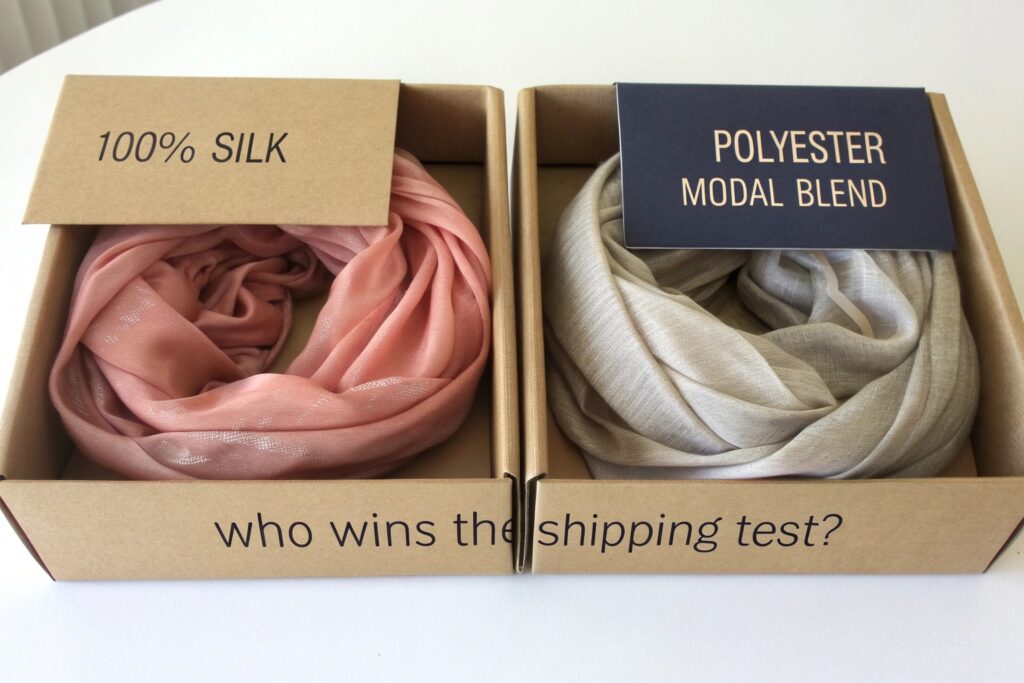
How do synthetic and natural fibers compare in shipping?
Synthetic Fibers
- Examples: Polyester, modal, rayon, acrylic
- Advantages: Wrinkle-resistant, water-resistant, durable
- Challenges: Less breathable, may retain odors
Natural Fibers
- Examples: Cotton, silk, linen, wool
- Advantages: Softness, breathability, organic appeal
- Challenges: Easy to wrinkle, heavier, harder to fold neatly
| Feature | Synthetic Fibers | Natural Fibers |
|---|---|---|
| Wrinkle Resistance | High | Low |
| Weight | Light | Moderate to Heavy |
| Foldability | Flexible | Can stiffen |
| Sustainability | Depends on source | Higher (if organic) |
| Shipping Resilience | High | Moderate to Low |
For B2B clients that depend on fast, affordable, large-volume delivery, we almost always recommend synthetic blends. They arrive looking as good as they did at dispatch.
How Material Choice Affects Folding and Packaging Efficiency?
Shipping scarves is not just about material strength—it's about how well the fabric behaves when folded, rolled, or vacuum-packed. Bad material choices can lead to bulkier packages, wasted space, and wrinkled products.
Scarves made from thin yet elastic materials like modal and poly-satin allow for tight, space-efficient folding while maintaining shape and presentation quality after unpacking.
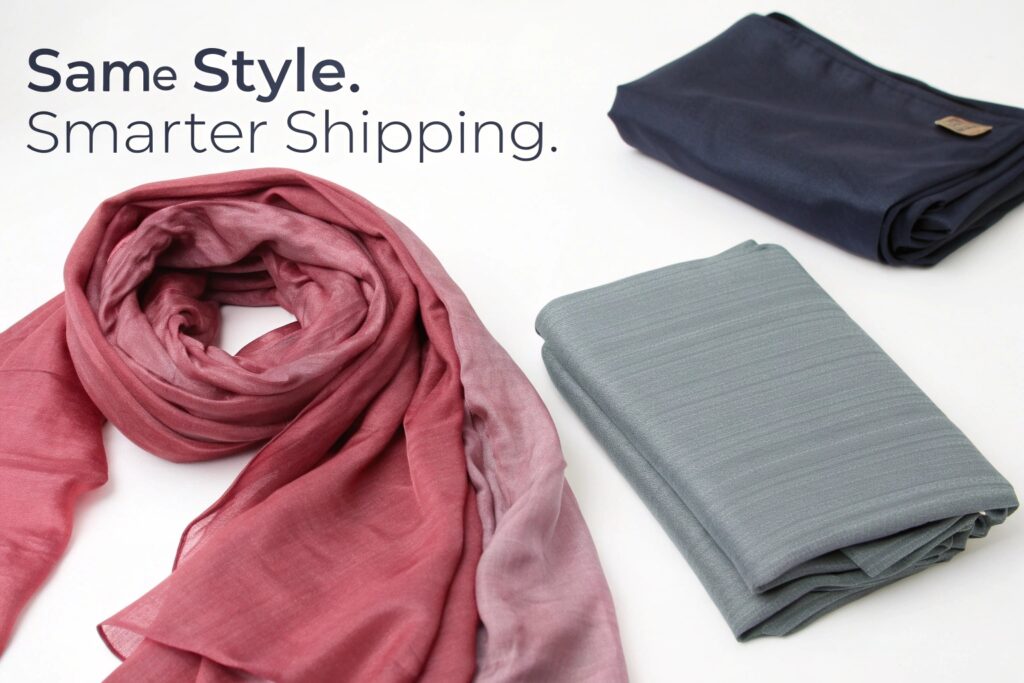
What makes a scarf easy to package without damaging it?
Flexibility and Elastic Recovery
- Materials like modal or poly-spandex have natural “bounce back”
- They conform to folded shapes, then regain form after unfolding
Thickness vs. Bulk
- A 100gsm modal scarf folds down tighter than a 180gsm cotton scarf
- Less bulk = cheaper shipping and cleaner packaging
Friction and Static
- High-friction fibers like wool can cause packing issues
- Smoother synthetic fabrics slide and settle more evenly
| Material | Foldability | Package Bulk | Shape Recovery |
|---|---|---|---|
| Modal | ★★★★★ | ★☆☆☆☆ | ★★★★★ |
| Polyester Satin | ★★★★☆ | ★★☆☆☆ | ★★★★☆ |
| Cotton | ★★☆☆☆ | ★★★★☆ | ★★☆☆☆ |
| Silk | ★★★☆☆ | ★★★☆☆ | ★★☆☆☆ |
At AceAccessory, we custom-test scarf dimensions for each fabric before mass packaging. This helps clients calculate freight costs and avoids surprises on the unboxing end.
Tips for Choosing Durable Yet Lightweight Scarf Materials.
No one wants to pay air freight rates for heavy fabric—or see their lightweight scarf arrive crushed and wrinkled. There’s a fine balance between durability and ease of shipping.
Select mid-weight fabrics (80–130gsm) that offer flexibility and surface strength. Blends with modal, viscose, or polyester often perform best in long-haul delivery conditions.
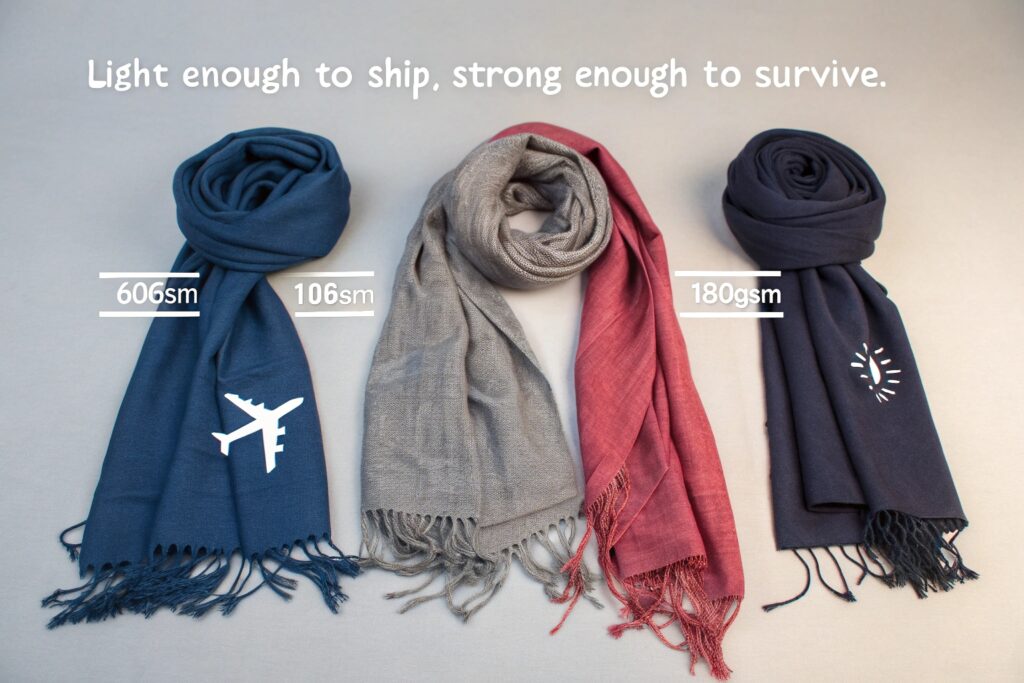
What properties should I look for in a scarf fabric?
A. GSM (Grams per Square Meter)
- Ideal range: 80–130gsm
- Heavier than that adds cost, lighter than that risks damage
B. Tear Strength
- Fibers like rayon and viscose can tear easily under stretch
- Poly-spandex blends offer better resistance to rough handling
C. Color Fastness
- Look for tested materials that won’t bleed in humidity
- Synthetic dyes bond better with poly blends during transit
| Feature | Ideal Range/Material | Shipping Impact |
|---|---|---|
| GSM | 80–130 | Controls cost + volume |
| Flex Strength | Poly-blends or modal | Reduces edge fray |
| Drape + Bounce | Modal, poly-chiffon | Prevents crush damage |
One of our American clients once had to repack 10,000 scarves because cotton viscose blend couldn’t hold its shape after sea freight. After switching to poly-modal with a tighter weave, their packaging costs dropped and post-arrival damage went to zero.
Conclusion
The secret to safe scarf shipping lies in the fabric. Choose smart blends that resist wrinkles, pack flat, and bounce back—your customers will thank you, and your shipping bill might even shrink.

